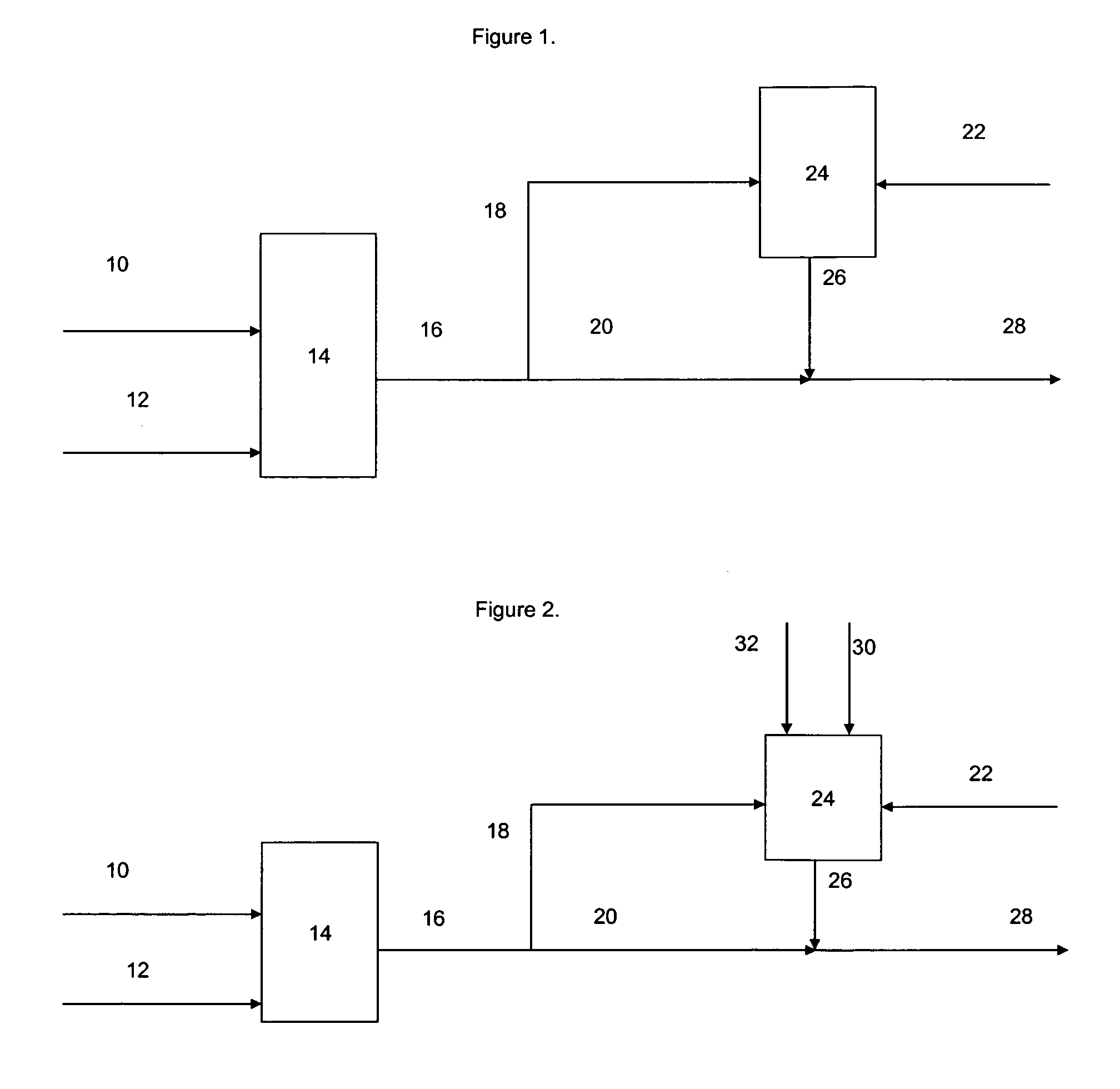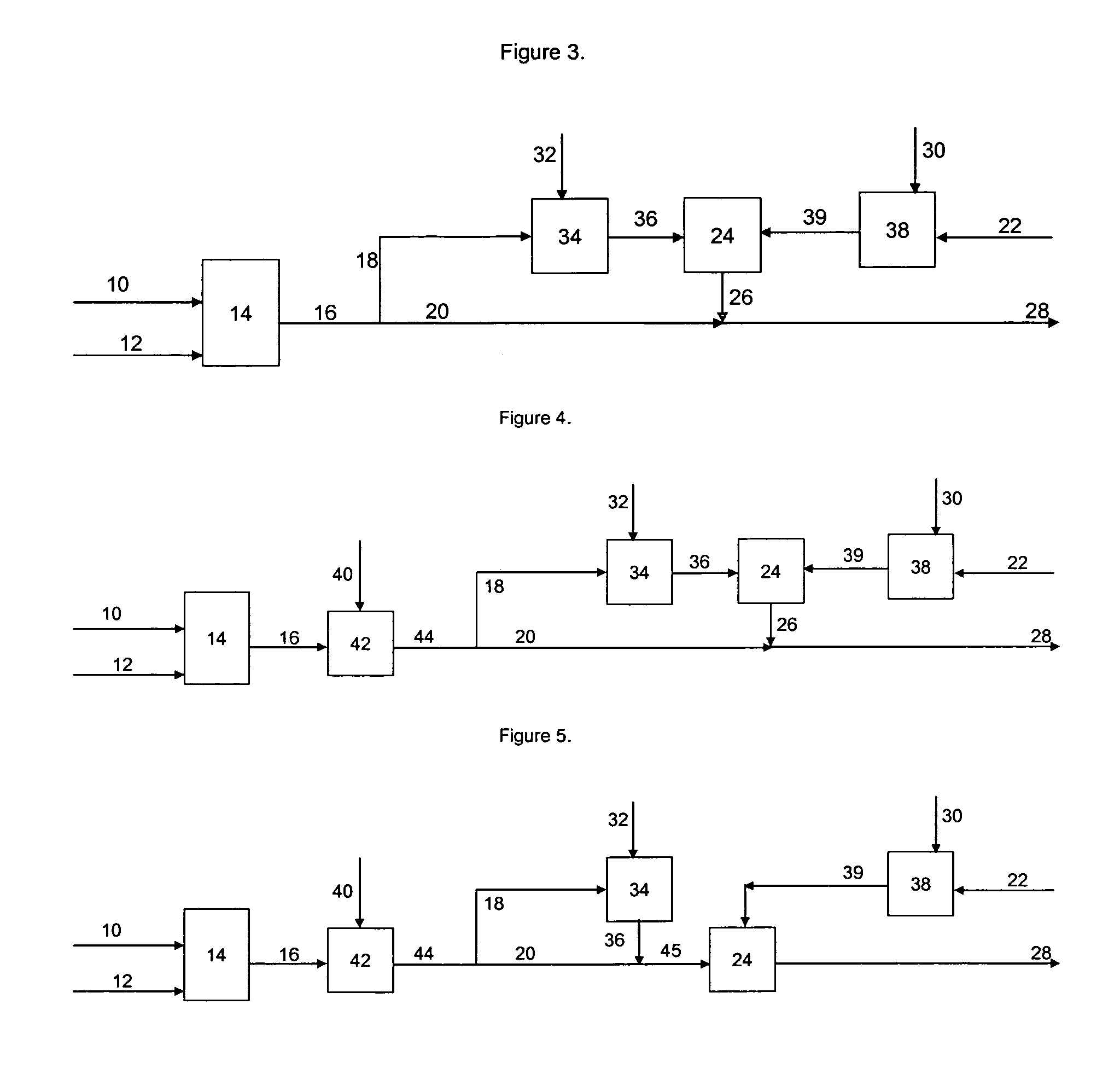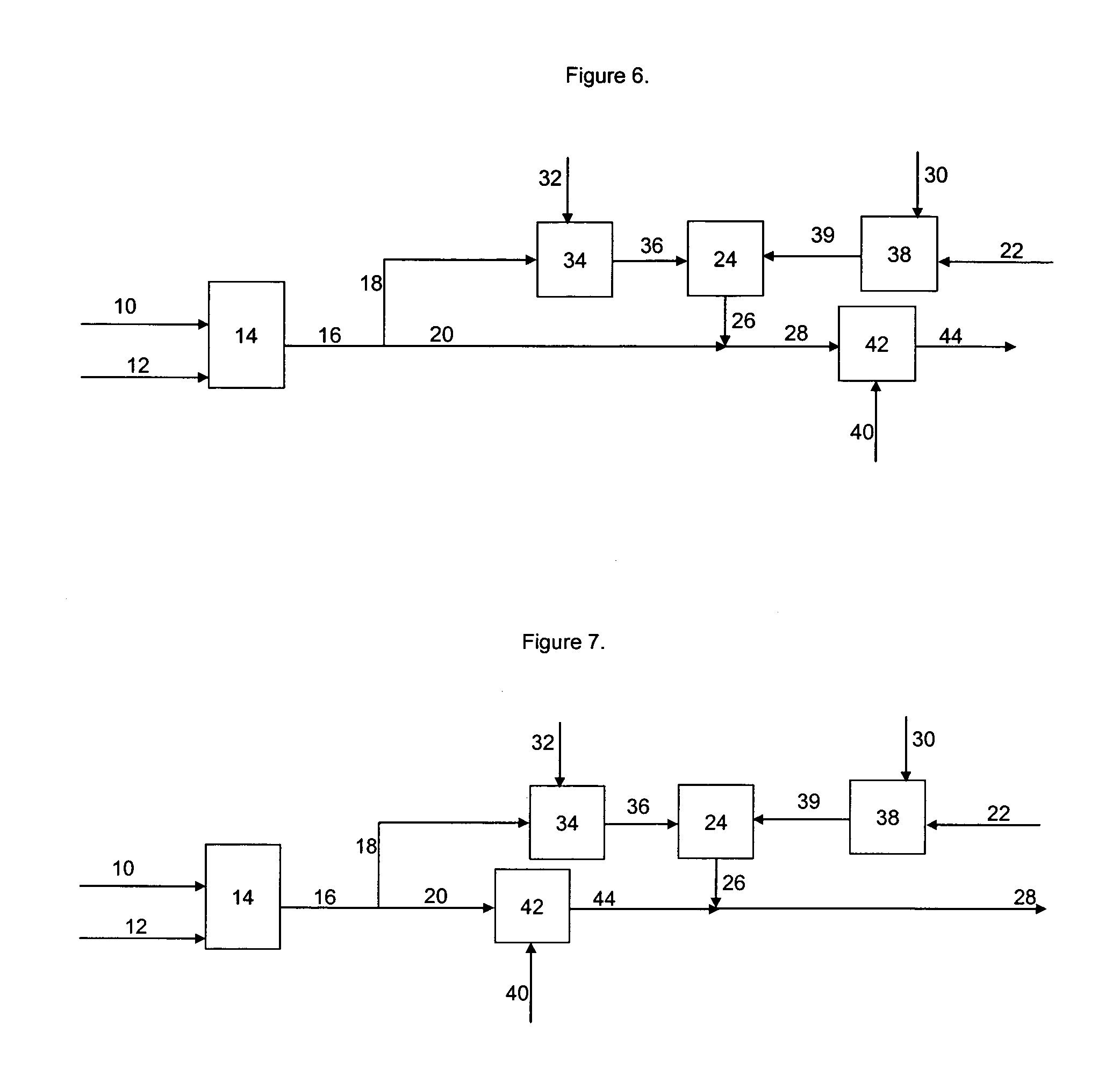Split-stream process for making nanocomposites
a nanocomposites and nano-tube technology, applied in papermaking, paper coating, coatings, etc., can solve the problems of expensive process, and achieve the effect of less costly and adversely affecting polymer properties
- Summary
- Abstract
- Description
- Claims
- Application Information
AI Technical Summary
Benefits of technology
Problems solved by technology
Method used
Image
Examples
example 1
[0169]Polymer Part 1: Four grams of BIMS 03-1 (10 wt % of PMS, 0.8 mol % Br) were dissolved in 1000 mL of hexane in a 2-liter reactor. The polymer cement was heated to 75° C. for 2 hours. Aqueous slurry of Cloisite Na+ (2 g) and water was prepared separately. The aqueous slurry of clay was added to the polymer cement with high shear mixing and 1 g of ethoxylated (5)cocoalkylamine (Ethmeen C / 15 from Akzo Nobel) was added to give a stable emulsion.
[0170]Polymer Part 2: Forty-six grams of BIMS 03-1 (10 wt % of PMS, 0.8 mol % Br) were dissolved in 500 mL hexane.
[0171]The cement of Polymer Part 2 was mixed with the emulsion of Part 1 in a high shear mixer for 15 min. The polymer / clay nanocomposite was precipitated by addition of isopropyl alcohol and dried in a vacuum oven at 85° C. for 16 hours.
example 2
[0172]Polymer Part 1: Six grams of BIMS 03-1 (10 wt % of PMS, 0.8 mol % Br) were dissolved in 1000 mL of hexane in a 2-liter reactor. The polymer cement was heated to 75° C. for 2 hours and 0.8 g of dimethylethanol amine (Aldrich) were added. The reaction was kept at 75° C. for 2 hours. Aqueous slurry of Cloisite Na+ (2 g) and water was prepared separately. The aqueous slurry of clay was added to the polymer cement with high shear mixing and 1 g of ethoxylated (5)cocoalkylamine (Ethmeen C / 15 from Akzo Nobel) was added to give a stable emulsion.
[0173]Polymer Part 2: Forty-six grams of BIMS 03-1 (10 wt % of PMS, 0.8 mol % Br) was dissolved in 500 mL hexane.
[0174]The cement of Polymer Part 2 was mixed with the emulsion of Part 1 in a high shear mixer for 15 min. The polymer / clay nanocomposite was precipitated by addition of isopropyl alcohol and dried in a vacuum oven at 85° C. for 16 hours.
example 3
[0175]Polymer Part 1: Six grams of BIMS 03-1 (10 wt % of PMS, 0.8 mol % Br) was dissolved in 800 mL of toluene in a 2-liter reactor. Then, 0.8 g of dimethylethanol amine (Aldrich) were dissolved in 100 mL isopropanol and added to the polymer cement. The reaction was heated to and kept at 80° C. for three hours. Aqueous slurry of Cloisite Na+ (2 g) and water was prepared separately. The aqueous slurry of clay was added to the polymer cement with high shear mixing and 2 g of ethoxylated (5)cocoalkylamine (Ethmeen C / 15 from Akzo Nobel) was added to give a stable emulsion. The emulsion was mixed for 15 minutes.
[0176]Polymer Part 2: Forty-six grams of BIMS 03-1 (10 wt % of PMS, 0.8 mol % Br) was dissolved in 500 mL toluene.
[0177]The cement of Polymer Part 2 was mixed with the emulsion of Part 1 in a high shear mixer for 15 min. The polymer / clay nanocomposite was precipitated by addition of isopropyl alcohol and dried in a vacuum oven at 85° C. for 16 hours.
PUM
| Property | Measurement | Unit |
|---|---|---|
| Percent by mass | aaaaa | aaaaa |
| Percent by mass | aaaaa | aaaaa |
| Percent by mass | aaaaa | aaaaa |
Abstract
Description
Claims
Application Information
 Login to View More
Login to View More - R&D
- Intellectual Property
- Life Sciences
- Materials
- Tech Scout
- Unparalleled Data Quality
- Higher Quality Content
- 60% Fewer Hallucinations
Browse by: Latest US Patents, China's latest patents, Technical Efficacy Thesaurus, Application Domain, Technology Topic, Popular Technical Reports.
© 2025 PatSnap. All rights reserved.Legal|Privacy policy|Modern Slavery Act Transparency Statement|Sitemap|About US| Contact US: help@patsnap.com



